The best films have a good mixture of both fantasy and realism. In the list of my favourites, you’ll find a sci-fi story that set the bar for futuristic cities and dealt best with the question of what it means to be human, yet it’s blended with classic detective noir movies; you’ll see a dark, modern fairytale set to the backdrop of the aftermath of the Spanish Civil War; you’ll also find a few comic book adaptations, but their biggest influences are Michael Mann’s Heat and George Orwell’s 1984. I could go on, but the point is that every film, no matter how fantastical, needs an anchor to reality in order to really hit home and be relatable. The best example of this, and the reason that it’s probably my absolute favourite film of all, is Stanley Kubrick’s A Clockwork Orange.
It cannot be overstated how well Kubrick managed to tell a story that, although pure fiction and based on the book by Anthony Burgess, was a tad too real for many. When he showed the nighttime antics of Alex and his Droogs that involved ultra-violence, home invasions, and rape, it was too much for some to handle. The common myth surrounding A Clockwork Orange is that it was banned in the UK shortly after its release in January 1972, but this isn’t completely accurate. The film wasn’t banned; Kubrick chose to pull it from circulation in early 1973 due to the controversy surrounding it. The film had such a massive impact on culture and the zeitgeist in the period after its release that, in March of 1972, it was referenced by prosecutors in court during a case involving a teenager charged with manslaughter—and this was not the only case where the film came up.

A 16-year-old boy used the film as an excuse for murdering an elderly vagrant, as Alex and his Droogs severely beat such a man in the film. The press also blamed A Clockwork Orange for a gang rape in which the attackers sang “Singin’ in the Rain,” mirroring Alex DeLarge’s infamous and sadistic rape of a woman whilst her husband is restrained and made to watch helplessly. After receiving death threats and having protesters outside his home, Kubrick decided to pull the film from circulation. It then became very difficult to see A Clockwork Orange in the UK for some 27 years, making it all the more intriguing and taboo. It wasn’t until after the director’s death in 1999 that the film was finally re-released.
The bottom line is that, like other great works of art that are ahead of their time, people in the early ‘70s simply weren’t ready for it. But why did it have such a huge impact in the first place? It’s a shame that A Clockwork Orange is often overshadowed by its own controversy because that often distracts people from the fact that it’s perfect in just about every way that matters, which is why it’s perhaps the greatest cult film ever. Even the disturbing scenes aren’t gratuitous and serve a purpose to the story. Every element—the costumes, dialogue, performances, cinematography, music, set design, and locations—is compelling. This is why fans and critics alike take the film so seriously.
I believe even those who oppose A Clockwork Orange are subconsciously intimidated by its übercool style, and this only adds to their fear of it. Burgess himself even praised it as “brilliant, so brilliant that it might be dangerous.” This is established from the offset with simple, stark opening credits followed by what is perhaps the best opening shot ever: Malcolm McDowell’s very still, grimacing face. Kubrick’s use of extreme wide-angle lenses creates a dreamlike quality that distorts the spatial relationships within scenes, creating an unusual disconnection between the characters and their environment. It’s this effect that led Vincent Canby of the New York Times to state that the film “is even technically more interesting than 2001.”
This is a bold but arguably correct statement, especially as 2001: A Space Odyssey is considered to be Kubrick’s greatest film and one of the most technically accomplished ever made. The music also rises to this challenge, which is something quite unbelievable when you stop to think about it. It’s rare in history that both sight and sound ascend to such heights in the same film. The exquisite Moog synthesizer compositions by Wendy Carlos set the tone throughout, and her electronic reinterpretations of classical music by Beethoven and Rossini are as avant-garde in their own right as the rest of the film. The soundtrack even includes the first recorded track to use a vocoder for vocals, and it stands alone as one of the best scores ever created.

Its retro sound perfectly reflects the dystopian not-too-distant future in which the story takes place, which is further accentuated by the set design and filming locations. The simplistic yet kitsch Korova Milkbar is iconic, from its black walls with white lettering to its erotic sculptures of women used as tables and to dispense narcotic-laced milk. A Clockwork Orange also features the coolest record shop that has ever been imagined and the definition of cutting-edge, minimalist design in Mr. and Mrs. Alexander’s house. Even Alex’s parents’ flat, with its ‘70s chic and psychedelic-patterned walls, is something to aspire to.
Kubrick found the best locations in and around the Greater London area to create his world, which stands apart from the city on its own. The highlight of these is the Thamesmead South Housing Estate on the outskirts of London: the first and last of experimental, self-contained living complexes. With its off-kilter, brutalist architecture and lake at the centre, it reflects the other futuristic, innovative elements of the film. You may also recognise it as the primary location for the British TV show Misfits, another favourite of mine. Someone on that production had the good sense to utilise this visually arresting estate to its full potential, and I’m surprised that it hasn’t been used more often over the years.
McDowell’s performance in A Clockwork Orange is career-defining and became the inspiration for many larger-than-life characters that followed, including multiple interpretations of The Joker. He’s backed by a supporting cast of hyper-real characters that all have a unifying, wry quality that adds to the charm of the film. The various people who Alex has to interact with aren’t on the same level as him but make up for it with exaggerated bravado. The script is full of quotable dialogue and even uses its own language of slang called Nadsat. Taken from the book, it’s a combination of Russian and Cockney rhyming slang. Nadsat is infectious and suits Alex perfectly, capturing his intelligent yet playful wit and charisma in an aural way.
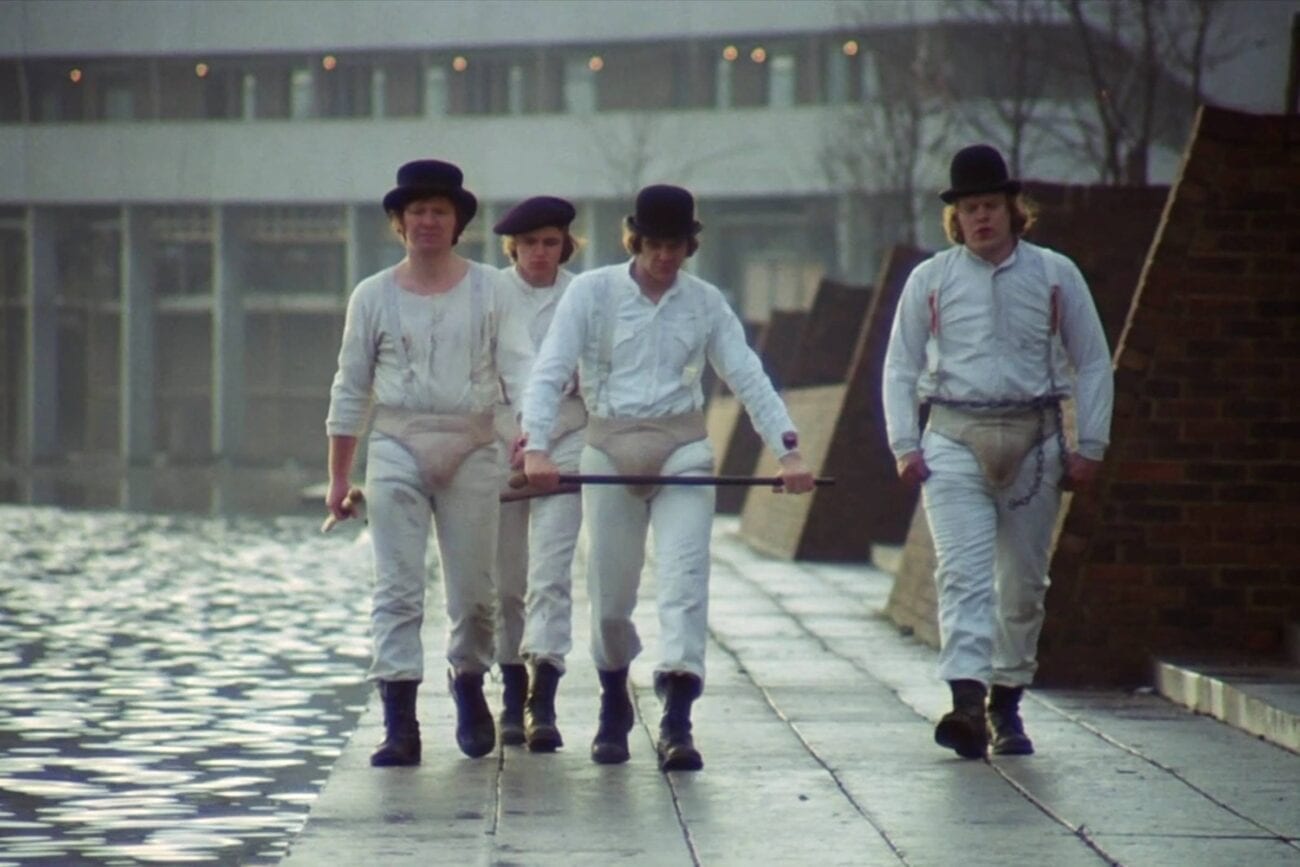
This brings us to the costumes. It’s hard to think of another outfit as iconic and which has permeated the public consciousness as much as the matching ones that Alex and his Droogs wear. You’d think this was the crowning achievement of a costume designer’s career, yet it was developed by Kubrick and McDowell at the former’s home. The latter happened to have cricket whites in his car, and this became the basis for the outfits we’d see on screen. It was Kubrick who suggested putting the jockstrap on the outside of the trousers, becoming a physical, phallic manifestation of their dark sexual crimes. Never has a bowler hat and cane been used so effectively in such an ironic way.
Add braces, unusual gory eyeball cufflinks, and the simple genius of putting two fake lashes onto one eye, and what you have is the most simple yet effective uniform for a teenage delinquent ever concocted. It’s my favourite fancy dress costume and one I’ve worn many times over the years. I still consider it one of my best compliments when a passerby said I look so much like Alex, it’s scary. It never fails to elicit strong responses, and not all of them are positive. It’s like wearing a piece of art or an outfit from a catwalk show. The most extreme example of this was when I was the same age as young Alex and foolishly wore it for a night out in a town that was sketchy, to say the least. It was a friend’s birthday, and she’d requested we all be in fancy dress.
Amongst the many positive responses, a rather burly man approached me in a bar. He spoke into my ear and quietly asked me whether the outfit was just for show or whether I’d like to step outside with him and take things to the next level. He seemed disappointed when I told him it was just a costume, and the gravity of what he was saying didn’t sink in until I sobered up the next day. As if this wasn’t bad enough, I then got into an altercation with an unsavoury chap in the street who tried to grab my cane off me. I wouldn’t let it go and tussled with him until his acquaintance pulled out a retractable nightstick and hit me with it. At this point, I begrudgingly released it as it was no longer worth the hassle.
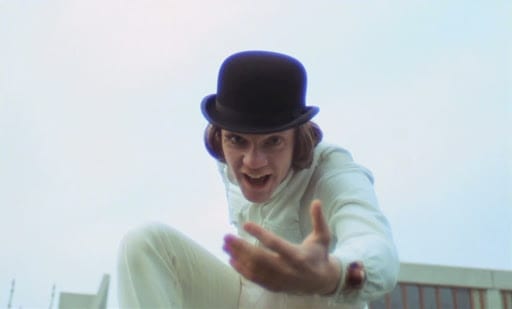
This was my personal experience with the controversy that A Clockwork Orange can create, and it’s simultaneously the best and worst thing about the film. It’s the best because, underneath the perfect look and sounds of the story, there’s substance in the form of a heavy, complex, philosophical message about society and free will. It’s the worst because some can only appreciate the film on a surface level and interpret its satire as glorifying violence and antisocial behaviour. In a way, McDowell did too good a job of portraying Alex, as he did it with such candour that he turned a character of pure evil into one of film’s most beloved antiheroes.
This is what many struggle with: differentiating between the entrancing character and the message he’s being used to send. I was lucky enough to attend a screening of A Clockwork Orange that had a Q&A with McDowell last year, and I was able to ask him whether he thought of Alex as evil when playing him or as the hero of the story. He replied saying he played him simply as a youth who had a lust for life and lived it to its fullest. This is exactly what some mistake for validation, missing the irony that Alex is not a character to admire but a commentary on the belligerent nature of youth.
His character is used to ask questions about rehabilitation and whether psychological conditioning and behaviour modification that strips one of their free will is acceptable. Many wonder where the name A Clockwork Orange comes from, and it’s tied to what many don’t understand about the film. It comes from the Cockney expression “queer as a clockwork orange,” which means when something looks alright on the surface but there’s something wrong internally. This works as a metaphor for what Alex becomes after his experimental aversion therapy; he’s organic on the outside but mechanical on the inside. He becomes robotic in his actions and is no longer able to be violent or sexual, even if he desires to be. Alex then finds himself a pawn that the paragons of both the left- and right-wing of the current political establishment want to utilise to their own ends.
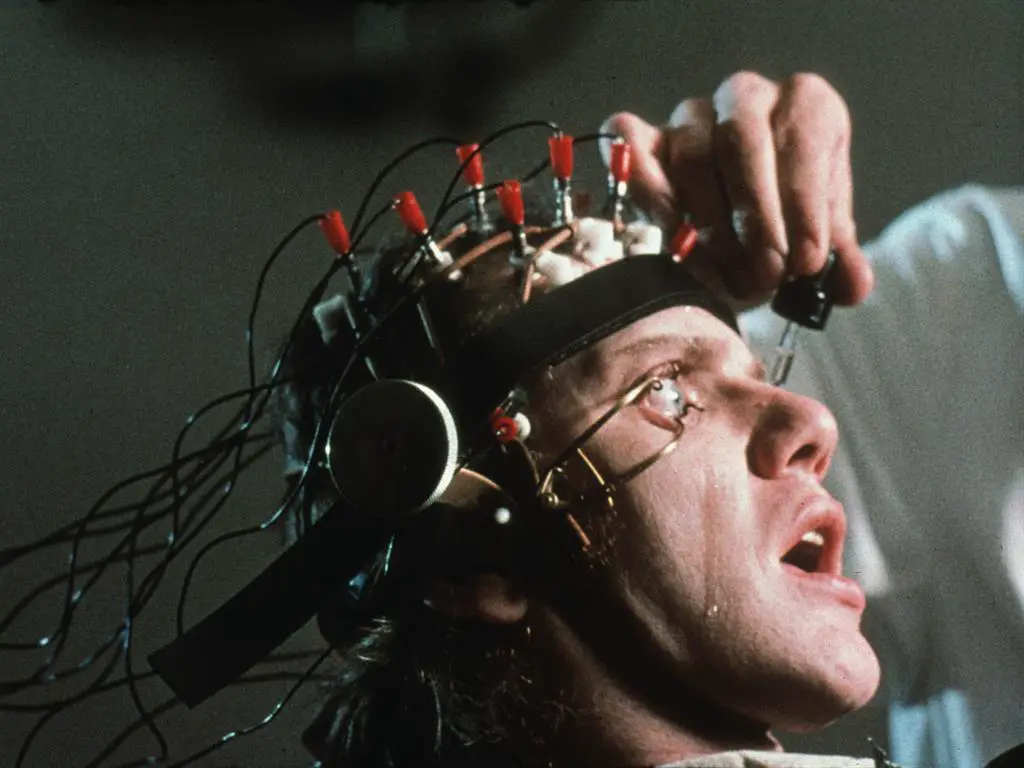
It works on another existential level when you view Alex as a man in his natural state: an unconscious mind conditioned to be civilised and creating “neurosis imposed by society.” It’s easy to see why David Bowie would come on stage to the theme from A Clockwork Orange in his heyday as Ziggy Stardust in the early ‘70s and why Alex’s uniform is perhaps the most imitated ever in fashion shoots. Kubrick invented techniques that combined sound and vision in ways that had never been thought of previously. He inadvertently laid the foundations for music videos and other media that would follow many years later and become an industry in their own right in the modern-day.
Despite Kubrick being a meticulous perfectionist, holding the record for most ever takes of one setup (127 for the scene on the stairs in The Shining) and longest continuous shoot (400 days on Eyes Wide Shut), A Clockwork Orange was one of his quickest, completed in just six months. McDowell has said that he “got it right” early on, and only a few takes of each shot were needed. That’s not to say he didn’t work hard and suffered a scratched cornea and several cracked ribs during shooting that prove it. The film was a financial success despite its many hurdles, grossing $26.6 million on a $2.2 million budget in North America alone.
It’s clear that everything came together nicely on this production. All of its brilliant elements stylise the substance to perfection. Along with its black sense of humour, which reminds us not to take it too seriously, it ticks more boxes than any other film I know, making it my logical choice as the best.
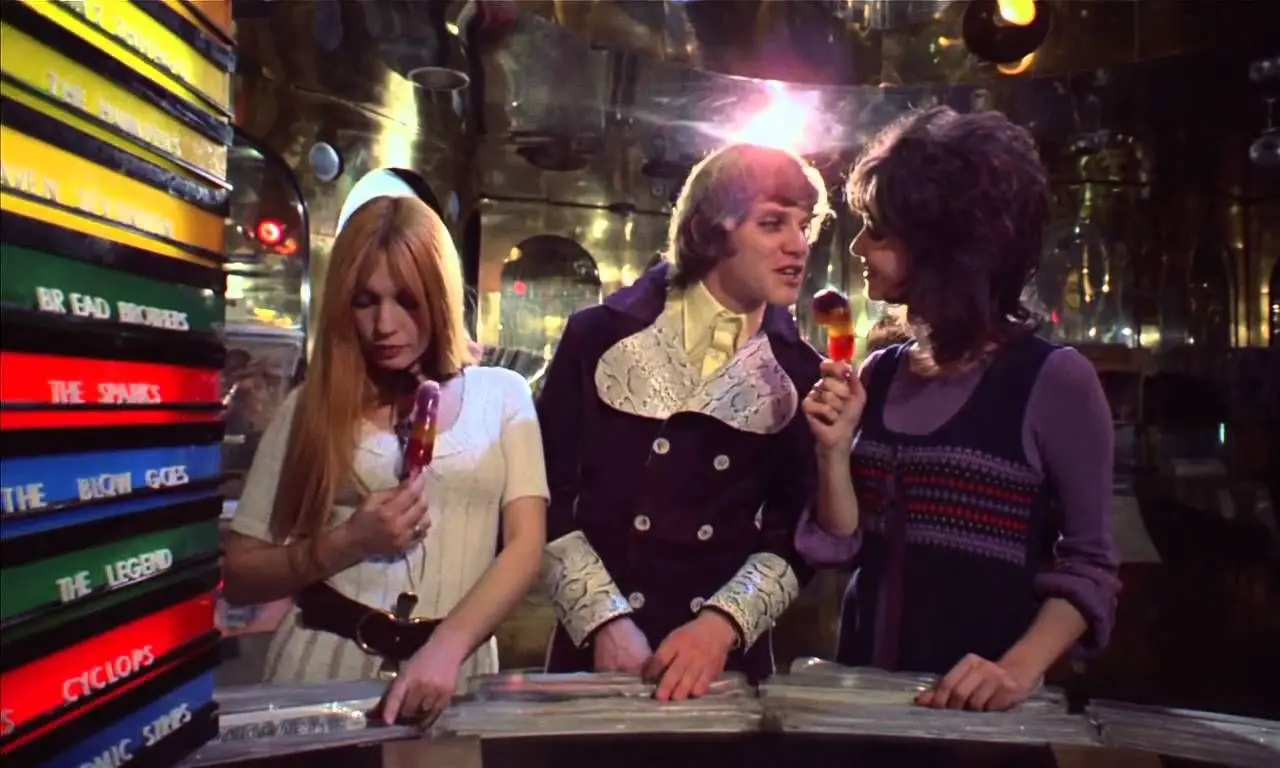


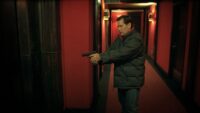

I concur Alex. Locations are so imperative to any great film. One of my favourite things to do is to find key filming locations in cities I visit. They’re always the most visually striking places, so it’s like someone has scouted the best parts of a city for you to see. I’m currently in Prague and I’ve found the building Bourne climbs down in The Bourne Identity (also the hotel they stay at in Spider-Man: Far From Home) and been to the hotel used as Casino Royale. I’ve also visited the Thamesmead South Housing Estate a few times back home, where a lot of CO was filmed, it’s a very cool place.
Thanks for reading!
Quite simply, it wouldn’t of worked when translated to the medium of film.
Also, off the top of my head, I believe I read somewhere that Burgess was persuaded against his better judgement to add that chapter by his publisher, as they thought the ending was too dark without it and there are still some versions that don’t include it. Don’t quote me on that though, you always have to take these things with a pinch of salt.
Thanks for reading!
In your opinion, why did Kubrick not incorporate the 21st chapter of Burgess’ into the film?
Kubrick claims he read the US version which didn’t include the (somewhat forced?) 21st redemption chapter. By the time it went to production it was all designed around the 20 chapter version and not the UK version. On another note, I’m an ACO locations expert. LOL. I have a photograph of all the call sheets from the Stanley Kubrick Archive. The Wikipedia ACO locations page was re-written shortly after obtaining them. So it’s now completely accurate as to where each scene was filmed. And yes it IS the best film of all time. I’ve never see any other film combine every perfectly made element from each department into one perfect film.
From the web:
“Why was the last chapter of A Clockwork Orange removed?
Two Versions of A Clockwork Orange: As he tells it, Burgess was desperate for money at the time in his life when he wrote A Clockwork Orange. As such, he allowed the excision of the final chapter of the novella from its American edition because it was more important to him that it be sold than that it be whole.”
I love this piece. Thanks!
I first saw A Clockwork Orange at a theater (Trondheim, Norway) in the spring of 1989, in my senior year of high school. I remember many people left early. I was riveted.
I also remember meeting and chatting with a (IMO) very pretty girl at a town-wide graduation party a few months later. She liked movies. I told her I loved A Clockwork Orange. She took half a step back and said: «If you like that movie, you’re sick and I don’t want to talk to you any more.» Then she left.
I let her go, glad we got that straigthened out early on. Any relationship we might have struck up would have been doomed from the beginning.
Thanks for reading it, I really appreciate you saying!
I’m jealous you got to experience the film when it was first released.
That’s hilarious! This is why I love the film so much,, it never fails to illicit a strong response either way. It reminds me me of McDowell’s encounter with Gene Kelly at a party. Apparently Kelly gave him a dirty look and stormed off because he didn’t approve of McDowell’s use of his song in the film!